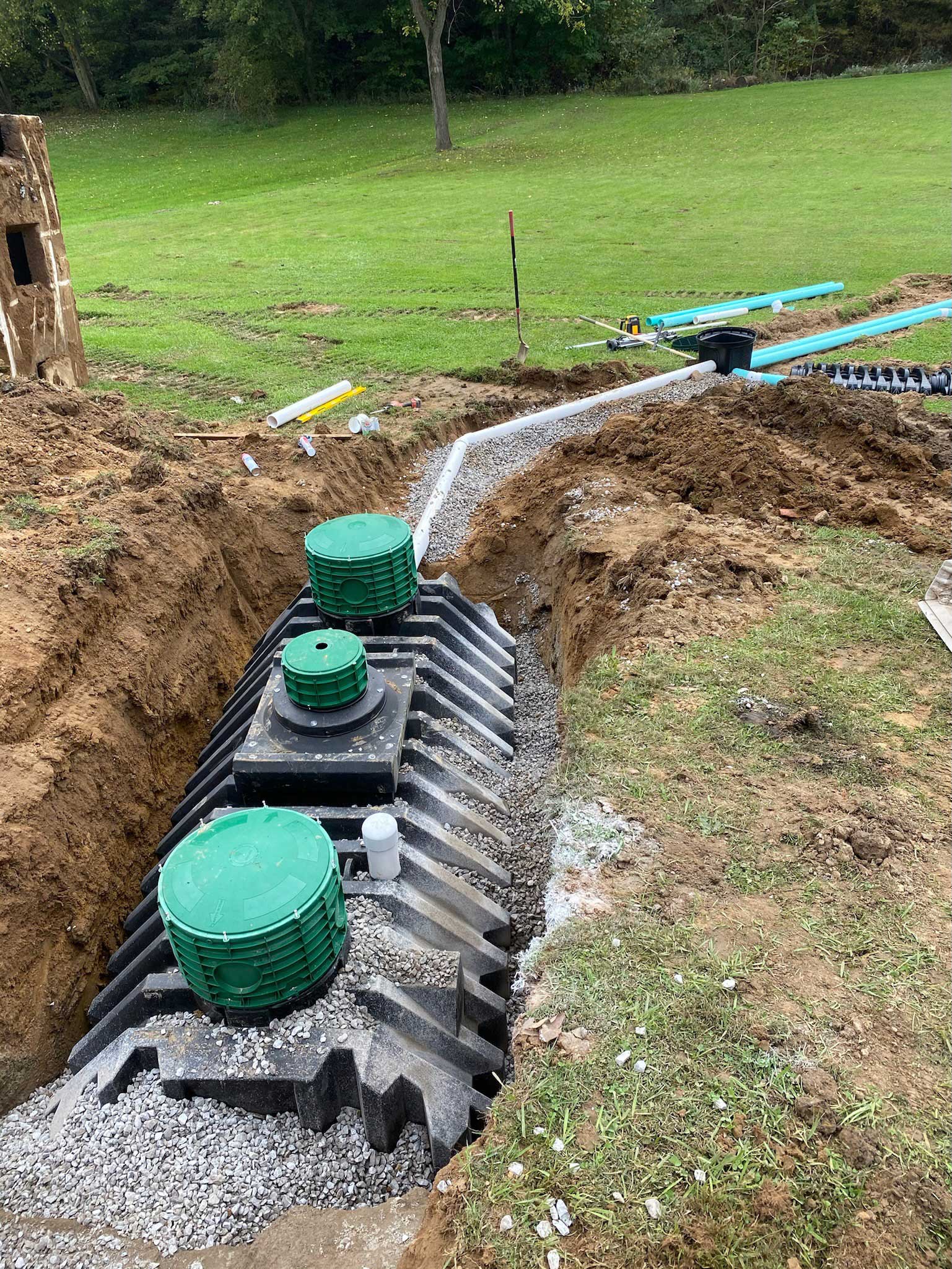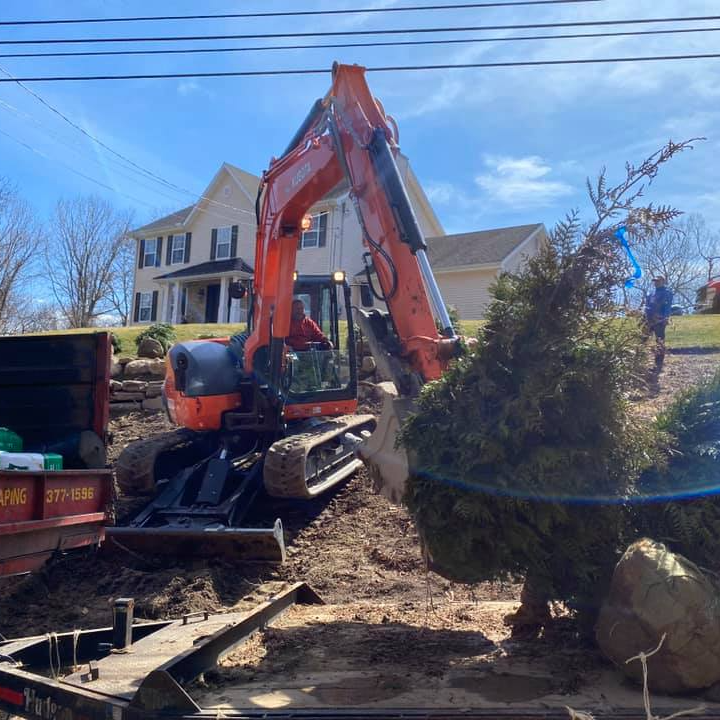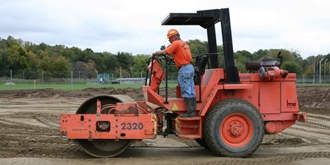Commercial Lancaster Trenching - Trenching Services for Companies in Lancaster
Commercial Lancaster Trenching - Trenching Services for Companies in Lancaster
Blog Article
Revealing the Art of Excavation: Pro Tips for Safe and Efficient Digging
In the world of excavation, the mastery of effective and risk-free excavating is an art form that needs understanding, adherence, and precision to well-known methods. As soil is turned and planet is moved, the complexities of excavation reveal themselves, requiring a keen understanding of devices, dirt make-up, safety procedures, and ecological factors to consider. The knowledge needed to browse these aspects effectively can suggest the difference in between an effective excavation project and a potential catastrophe. By unraveling the layers of this intricate procedure, a globe of techniques and insights waits for those seeking to boost their excavation skills to brand-new heights.
Value of Proper Tools
To guarantee the safety and security and effectiveness of any kind of excavation job, using the appropriate devices is vital. The right tools not only improve efficiency but likewise mitigate dangers related to digging. Excavation jobs vary in extent and intricacy, ranging from small property landscape design work to large-scale building undertakings. Despite the job dimension, having the proper tools can make a significant distinction in the end result.
These functional makers come in various sizes to match various project requirements. Mini excavators are ideal for smaller tasks, while bigger excavators deal with much more extensive tasks successfully.
In addition to excavators, other essential tools includes dump bulldozers, trucks, and plates. Unload trucks are essential for getting rid of and moving excavated products, while plates are utilized for digging narrow and deep trenches. Bulldozers master tasks that call for pushing large quantities of dirt or particles. By purchasing the appropriate devices, excavation jobs can be finished securely, in a timely manner, and with precision.
Recognizing Dirt Structure
A comprehensive understanding of dirt composition is basic for implementing excavation jobs with precision and security. Recognizing the different kinds of soil is important as it straight impacts excavation approaches, tools option, and general project efficiency. Soil make-up generally includes four primary parts: sand, silt, clay, and organic issue. Each component has unique homes that affect just how dirt reacts to excavation processes.
Silt bits are smaller than sand but bigger than clay, supplying modest drainage and cohesion. Organic matter, such as rotting plant material, affects dirt fertility and stability.
Before starting excavation, carrying out soil examinations to establish its structure and qualities is vital. This details aids in choosing the ideal tools, executing precaution, and establishing excavation strategies tailored to the details soil conditions - septic ohio. By recognizing dirt make-up, excavation professionals can improve job end results while making certain security and adherence to best methods
Precaution and Protocols
Recognizing soil make-up is the cornerstone whereupon safety procedures and protocols for excavation tasks are built, making sure the well-being of employees and the success of the endeavor. There are a number of crucial actions that should be applied to mitigate dangers and protect against crashes. when it comes to security throughout excavation.
Most importantly, prior to any excavating begins, a comprehensive evaluation of the website must be carried out to identify any type of prospective threats such as below ground energies, unstable dirt problems, or nearby structures that could pose a danger. It is important to have a competent person supervise the excavation process to make sure that all security procedures are complied with purely.
Additionally, all employees associated with the excavation must be correctly educated in safe digging methods and the correct procedure of equipment. Individual safety tools (PPE) such as tough hats, high presence clothes, gloves, and safety and security boots ought to be used in any way times to reduce the risk of injuries. lancaster trenching. Regular security meetings and tool kit talks must likewise be carried out to maintain all workers informed concerning potential hazards and reinforce safe job techniques. By sticking to these precaution and methods, excavation projects can be finished effectively and without incident.
Effective Excavation Preparation
When beginning on an excavation job, thorough preparation is crucial to make sure efficiency, safety and security, and successful end results. Efficient excavation preparation entails several essential actions that are important for the smooth implementation of the task. The primary step is to carry out a thorough site analysis to identify any type of prospective dangers, such as underground utilities or unsteady soil conditions. This details is important for establishing an in-depth excavation strategy that includes precaution and run the risk of reduction techniques.
As soon as the site analysis is total, the next step is to develop a clear timeline and schedule for the excavation tasks. This includes figuring out the sequence of jobs, equipment requirements, and workforce allotment. Proper scheduling helps stay clear of hold-ups and makes certain that the project remains on track.

Furthermore, interaction among all employee is extremely important during the planning stage. Clear regulations, regular updates, and reliable sychronisation are necessary for an effective excavation task. By spending effort and time in meticulous preparation, excavation groups can dramatically boost efficiency, reduce threats, and attain effective outcomes.

Managing Ecological Factors To Consider
With boosting emphasis on environmental sustainability in building techniques, taking care of useful reference ecological considerations has actually come to be an essential element of excavation projects. Excavation tasks have the potential to impact the surrounding setting with dirt erosion, sediment drainage, environment disruption, and contamination of water sources. To alleviate these threats, it is vital to carry out best techniques that prioritize ecological protection.

Moreover, proper waste administration is essential to avoid dirt and water contamination. Applying procedures for the disposal of unsafe materials, recycling of waste materials, and minimizing using harmful chemicals can considerably reduce the environmental influence of excavation jobs. By integrating these practices into excavation planning and navigate to this website implementation, building business can make sure that their jobs are not just secure and productive however likewise eco responsible.
Final Thought
To conclude, understanding the art of excavation needs an extensive understanding of correct devices, dirt composition, precaution, and reliable planning. By following these guidelines and thinking about environmental aspects, excavations can be carried out securely and successfully. It is vital to prioritize safety and efficiency in every excavating job to ensure effective results.
As dirt is transformed and planet is relocated, the ins and outs of excavation disclose themselves, demanding an eager understanding of equipment, dirt make-up, safety protocols, and ecological considerations.To ensure the safety and performance of any kind of excavation task, utilizing the suitable equipment is extremely important.A detailed understanding of dirt make-up is fundamental for carrying out excavation projects with accuracy and safety. Recognizing the different kinds of soil is important as it straight affects excavation methods, equipment choice, and general task efficiency. By comprehending soil composition, excavation professionals can improve project end results while view it making certain security and adherence to finest practices.
Report this page